Finding the right strategy for a profitable professional training business hinges on so many factors. Your overall business model needs to suit your market and long-term goals, your learner experience needs to be top-notch, the technology you use as the foundation of your program has to work for you (not against you)… and so much more.
In this article, I outline 5 elements that are truly the foundation of your success – building and supporting a profitable and growing training business. Together they’ll help you solve problems such as planning for scale, content strategy, and leveraging core assets.
5 Elements for Professional Training Business Success
Whether you’re selling direct to individuals or organizations, licensing or delivering learning, these are the most important elements of your business strategy:
- Business Model: Identifying Opportunity
- Learning Product Distribution: Scaling Delivery
- Content Creation: Leveraging Expertise
- Technology: Choosing the Right Training Platform
- Monetization: Maximizing Your Assets
Element #1 – Business Model: Identifying Opportunity
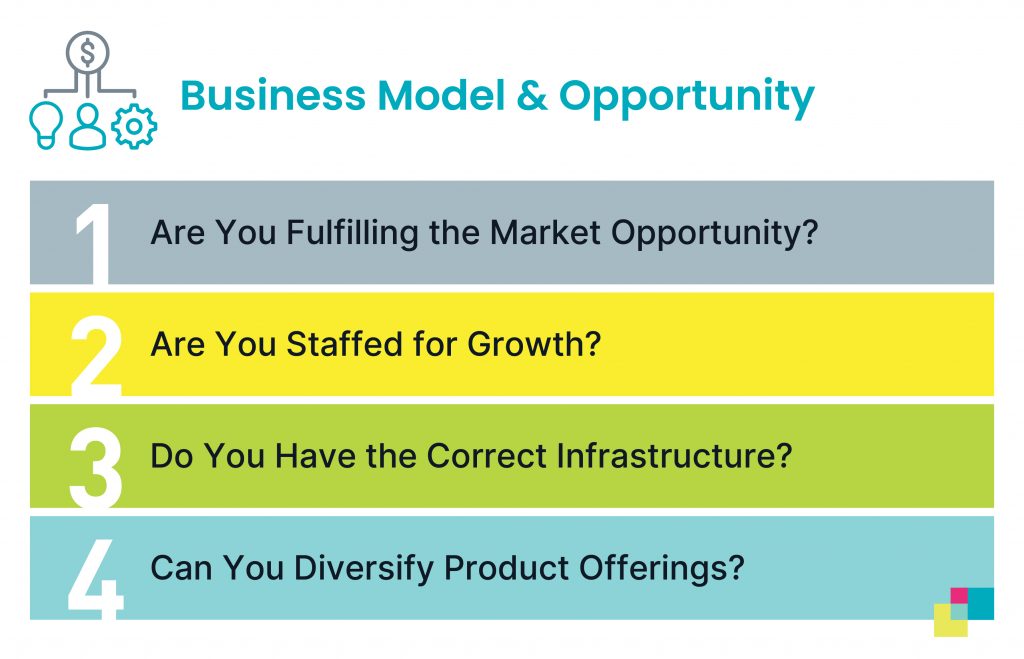
Training businesses, to no surprise, are looking for technology that enables selling content or eCommerce expertise.
Going through the exercise of business modeling first is essential before searching for a technology solution. Your foundational decisions must be built on the competitive landscape and the market opportunity. Ask yourself:
- What marketplace are we going after and why?
- How are we positioning ourselves in that landscape?
- What content do we need?
- What is the order in which we’re going to develop that content?
- Do we have the capabilities to do it in-house?
- Are we staffed for growth?
- What does that cost and how does that cost impact the effectiveness or the success of this content in the marketplace?
Element #2 – Learning Product Distribution: Scale Training Delivery
Now, let’s look at how to take your learning product and learning experiences and distribute them. What do you need in terms of technology or what do you need in terms of systems to be able to be successful?
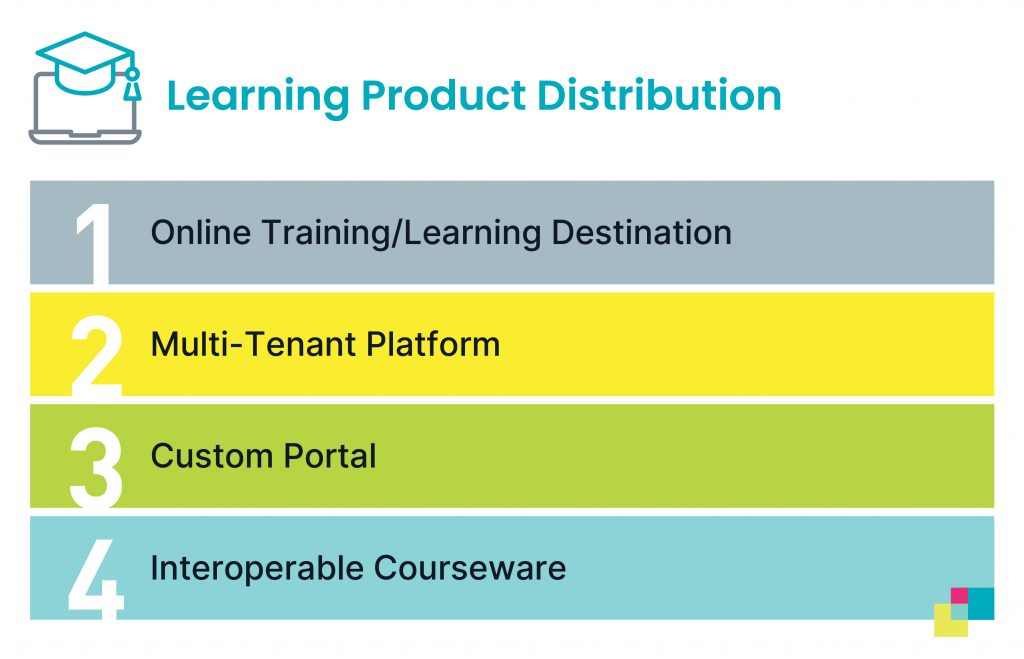
Think about your learning destination. In many cases, the learning destination is a desk. Then your distribution strategy hinges on your ability to create the storefront, the ability to merchandise your content – to have fully integrated commerce.
You become a one-stop shop. Everything stems from that one destination learning site.
And, multi-tenancy becomes essential because you want to be able to sell not only to one organization but hundreds or thousands. It’s about creating custom landing pages and front doors for each of these entities. Their users have access to the white-labeled course, and the managers and the individuals that are responsible for their learning needs can come in and monitor progress. The system allows you to seamlessly distribute and manage your licenses.
A common misconception is that domains are the same as managing client portals – but they’re not. Domains are about separating users inside a learning management system. But what it’s missing is the focus on making money by licensing content. In other words, managing the licensing and the delegated administration of those users.
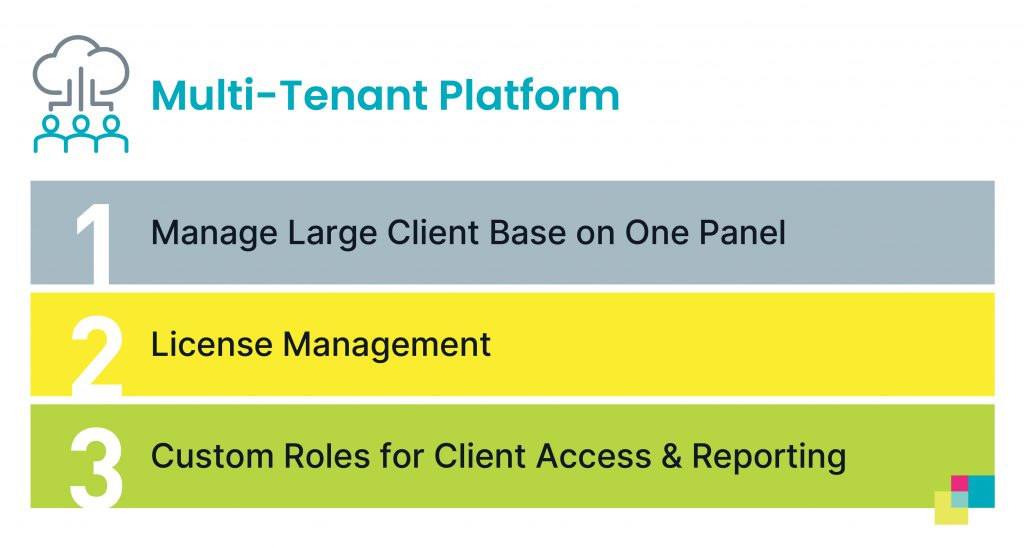
You need a platform that’s tailored to licensing and has a licensing management model. It’s likely that some of your clients are going to ask you to create a fully custom portal for them. With this type of model, you have a fully dedicated stand-alone domain. The client can go in, create courses and author and manage their own content. And, they can merchandise content out to their extended enterprise. These micro-sites and licensed-branded classrooms originate from your technology and can be distributed easily and managed. All of that content, reporting and data are all in one place.
Another situation might be a client or organization that wants your content, but wants to put it on their learning management system (LMS). Now, when you make changes or updates to content, it’s digitally propagated out across your network of clients. So, you don’t have to notify clients of every change – instead, delivered content is on their LMS but remains tethered to you. You retain complete accountability.
In addition, interoperability should be non-negotiable. All systems and applications must be able to interact and exchange data. All the digital content, tools and resources should be as easy as drag and drop.
Element #3 – Content Creation: Leveraging Expertise
At Thought Industries we focus on creating an effective, immersive and differentiating learning experience. An important conversation to have is about content creation. Content is the heart of the learning experience.
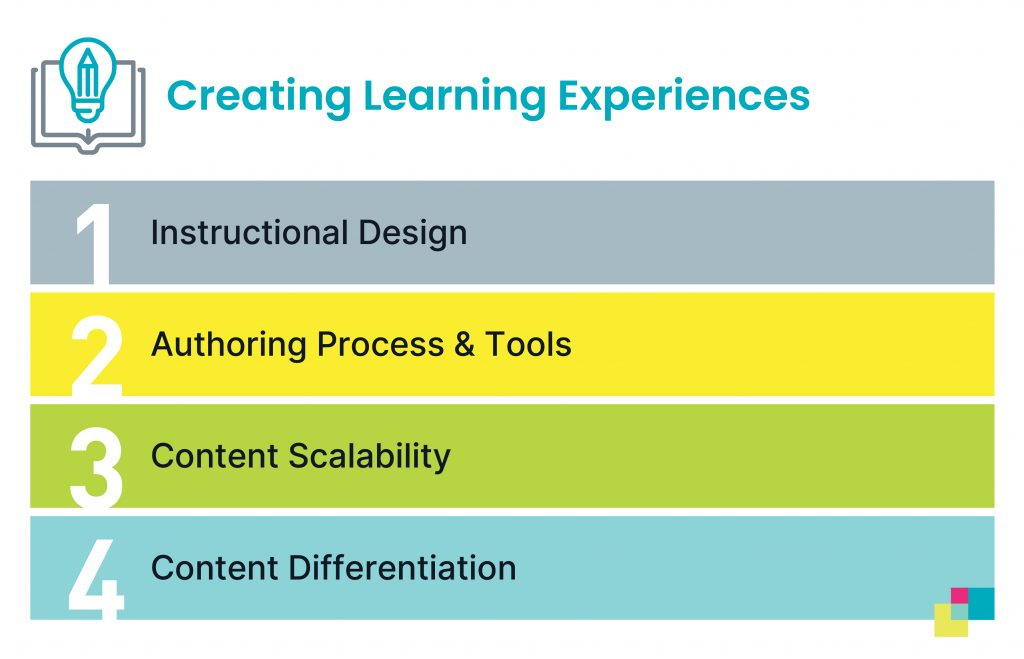
With content creation, it’s not just about the revenue coming in from those sales – it’s the expenses going out. Content creation can be in-house versus using third parties or contractors. These production decisions will significantly impact the profitability of your business.
Training companies need to figure out how to create the highest quality content in the most efficient way. If it takes you $50,000 to develop your library, and that has the same perceived quality or ability to generate revenue, as if you invested only $30,000, you must sell a lot more content to make up for that delta.
Plus, think about the actual instructional design – how are you going to initiate the impact you’re hoping for? How can you develop once and deploy many times, so you’re not reinventing the wheel on each new piece of content?
Element #4 – Technology: Choosing the Right Professional Training Business Platform
The technology you choose is the foundation for your success. Unless you are comfortable with the most rudimentary approach (and equally rudimentary results) you will need a learning management system (LMS) to sell, deliver and track business activity.
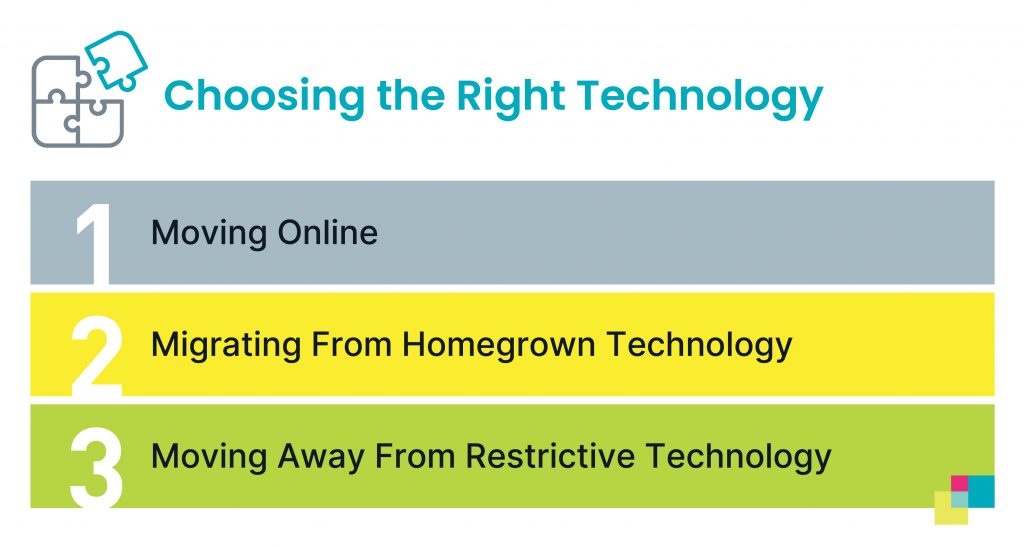
There are over 700 different LMS platforms out in the global learning technology industry today, and many dozens of different approaches from these systems. There are only a few LMSs for training businesses.
Are you targeting K-12 or higher education? Are you certifying professionals in their industry? Choosing the right technology is all about starting at the beginning and defining your use case, as we said earlier. Then, find the kind of technology you need to make it happen.
Some organizations started out by building their own learning management system because they couldn’t find what they wanted. They create their own website, tied to their own ERP system, tied to their own catalogs, databases, eCommerce systems…
This sounds great, except it’s tough work to create a learning platform. It costs a lot of money to keep it up to date. And it’s not even your core business.
In fact, next-generation LMS platforms can do exactly what training businesses want, and provide the support that’s required, and do it all better than any homegrown technology. You can find a vendor who’s doing exactly what you’re trying to do from a business standpoint.
On top of the administrative overhead of a homegrown LMS, individual learners are now exposed to so much advanced, well-designed technology today, they’re looking for a really elevated learning experience. Their expectations of online learning have increased significantly. There are experiences and outcomes. What type of experience are you providing to that individual learner? How are you ensuring the desired outcome, so they meet their goals and come back for more?
Element #5 – Monetizing Training: Maximizing Your Assets
The “stack” monetization model is a good place to start when you’re thinking about overall revenue and profit for your training business. We start with positioning and ways to optimize growth through the delivery and licensing of your content. You want to establish yourself, then build new revenue streams, new distribution systems. How do you manage and scale all that and grow? The goal is a highly profitable, high-margin learning business.
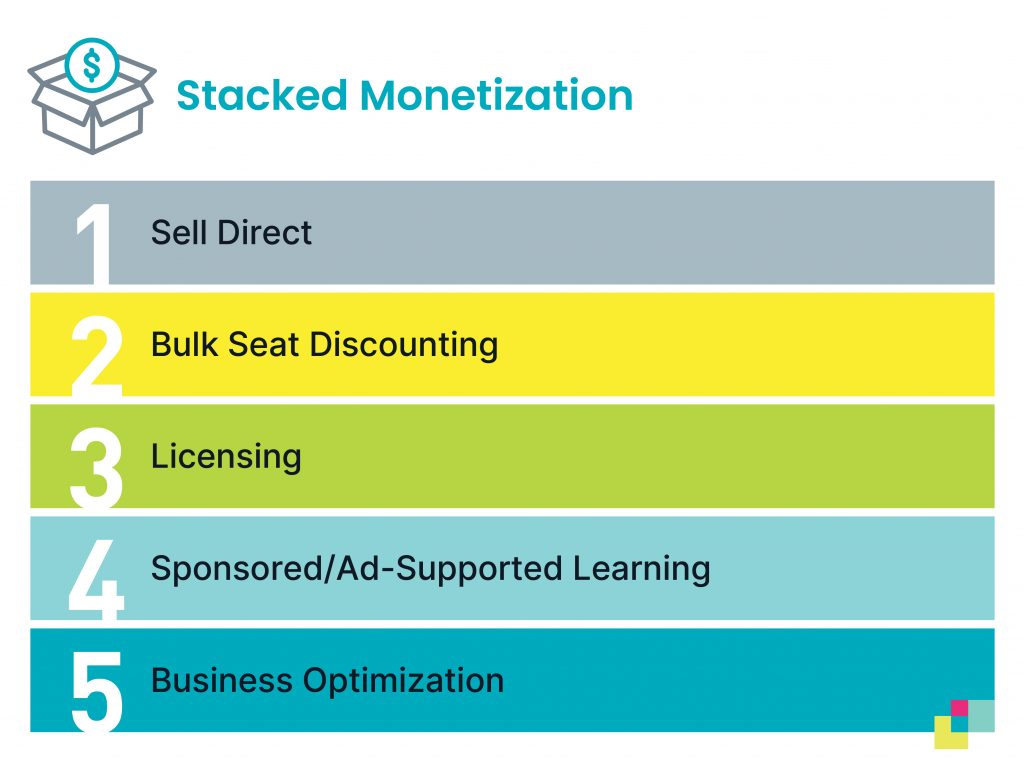
Consider these questions as you put together a pricing & packaging strategy:
- Do I put a price based on a course or a price based on an audience – or both?
- Can we group or bundle courses?
- Should we offer individualized training plans?
- Should we sell a subscription to the entire library?
- Do we consider “timed access” to certain courses or content?
- Can we introduce a new revenue stream by adding consulting?
You can use these different strategies in combination, and in special promotions to drive sales. Having all your eggs in one sales basket is not a wise way to maximize your content business.
When we talk about monetization, we’re talking about the ability to grow and scale. We focus quite a lot on licensing as a tremendous way to leverage expertise and content. It’s not just the challenge of creating the content, selling the content, distributing the content, it’s the challenge of being able to scale – to effectively manage the content, to license courses and the distribution of content to individual cohorts, to clients and partners. Another aspect of licensing is customized learning portals – a fully dedicated URL for your client.
You must have the technology to support those different streams of monetization simultaneously or concurrently, to get the most value, and to hedge against risk.
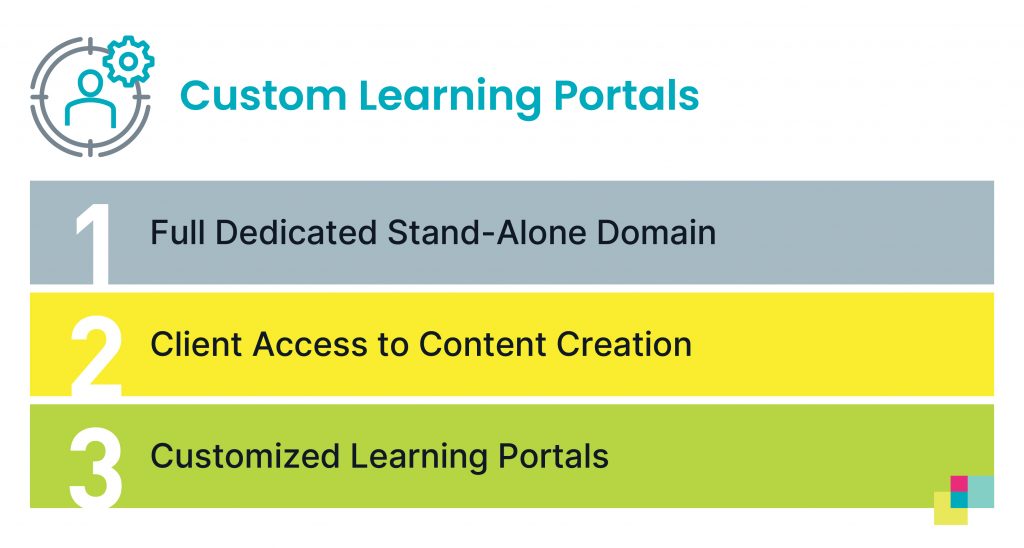
The road to success, in addition to these 5 elements, is to find an LMS vendor that is willing to work in partnership with you, to understand the complexity of your business, how you’re looking to grow, how you need to scale. It’s not just what the technology can do, but the support they give in the long term.
And, for more ideas on how to optimize your pricing and packaging strategy, check out this infographic.



